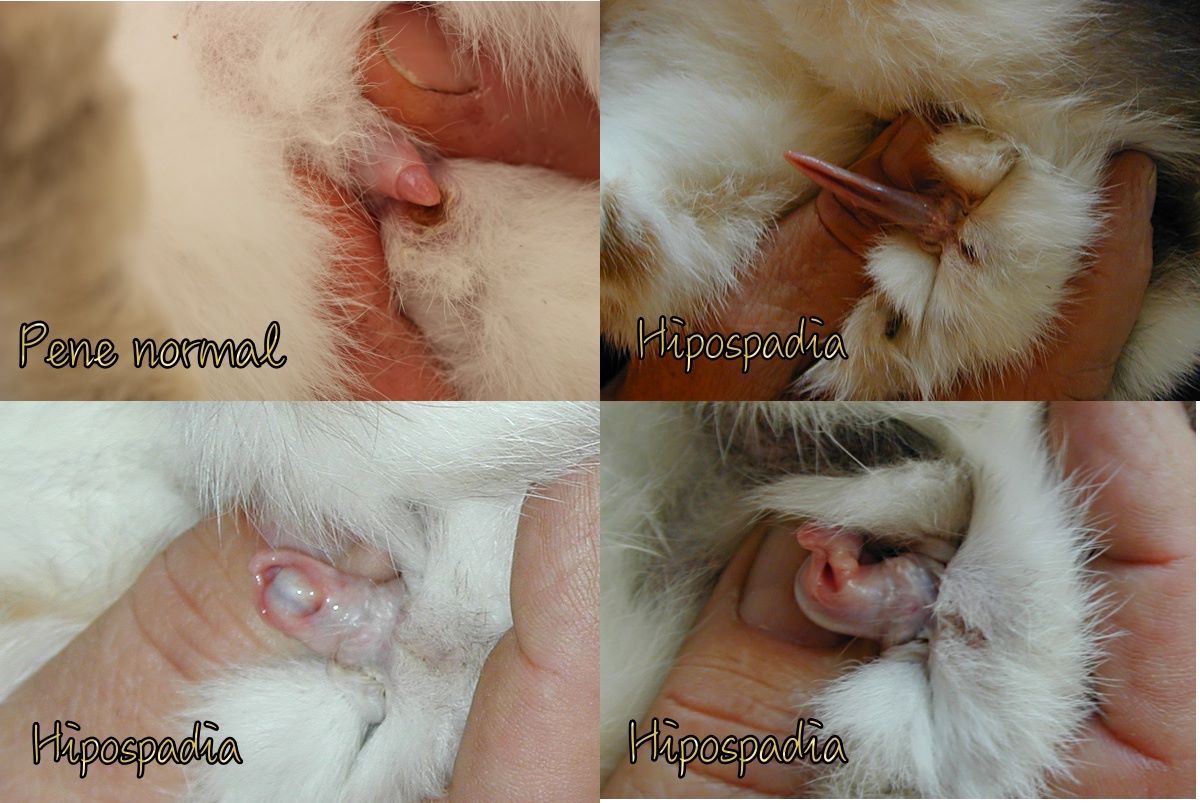Its name says it all: the Vienna blue rabbit comes from Austria. Not only is it beautiful with its shiny blue-grey...
HOW TO SEX MY RABBIT?
INTRODUCTION
Many times we have seen or experienced the situation where a bunny comes home to enlarge the family but we have been told that "it is too small to be sexed" or that it was a male and then turned out to be a female and vice versa. This not only indicates that the person who has sold or given it to us knows absolutely nothing about rabbits, but also that if we have more rabbits at home it can be difficult for them to live together or it can lead to a compromising situation: irresponsible and accidental breeding.
AT WHAT AGE DO YOU SEX A BABY BUNNY?
As a general rule, rabbits are sexed when they are 12-14 days old, but in the case of larger and more developed rabbits (large breeds or small litters in which the foetuses have had more food and space to develop) they can be sexed at the moment of birth.
Some vets say that sexing cannot be done well until two or three months (some have mentioned that it is impossible until 5 months, but at 5 months we are talking about an adult rabbit). This only hints at the inexperience of the vet in matters of sexing, as it is very difficult for an experienced breeder to make a mistake except in specific cases such as the one we will see later on.
PHYSICAL DIFFERENCES IN THE GENITALIA OF MALE AND FEMALE RABBITS
The differences are very clear even when the rabbit is a baby, as even though they are "hidden" these same genitalia have differences which make sexing with a little practice very easy.
When we are talking about a new-born rabbits both the vulva and the penis cannot be seen as they are so small that they can give rise to confusion, so we have to look at the distance between the genitals and the anus. In the females both points are completely close together while in the males they are slightly further apart, we can also observe that the pubis of the male is slightly more curved and longer.
When the rabbits are 15 days old, the vulva is shown as a vertical line that "enters" the perineum (area between the external genitalia and the anus) while the penis is shown as a mound ending in a circle.
When the bunny has two or two and a half months old, the male hormonal system makes the testicles begin to descend on both sides of the penis (they can be more or less dark, they have no hair and can be introduced into the body or lowered depending on the situation), the penis begins to mature and is pointed and small in size (except when the rabbit is excited, which then becomes quite long), the vulva always continues to be a vertical line and its colouring will tell us how sexually receptive the doe is.
.jpg)
(Above left: Genitalia of the rabbit at 15 days of life || Above right: Genitalia of the rabbit at 4 months, with its definitive and adult appearance).
CONSEQUENCES OF A BAD SEXING
If we only have one rabbit at home a bad sexing does not have great consequences apart from the fact that the castration of the female is more expensive and invasive than that of the male, but if we have more pet rabbits and we have them all together we can find that they start to fight (above all if they are not castrated) or that we start to have uncontrolled litters (irresponsible), within these two cases there are other situations which we can find:
-FIGHTS: Fights are common between badly socialised animals or animals of the same sex, in the case of rabbits we can never have two males together (castrated or uncastrated) as they will fight hard and can really hurt each other.
-MUTILATIONS: Rabbits can be very temperamental with their conspecifics and it is common that when fighting they bite each other on the nose, lips, ears or even the genitals, many females on being constantly mounted by the male and seeing themselves "saturated" attack the genitals, which can cause the rabbit to have to undergo surgery or bleed to death.
-UNWANTED LITTER: Unwanted litters are a total lack of responsibility on the part of the owner and, in the case of rabbits, many litters die because of the inexperience of the owner, because they do not have an appropriate place to be born or because the other rabbits which live loose in the house kill them.
-EARLY MATING: Rabbits cannot be crossed before they are 5 months old, if our rabbits are badly sexed and without knowing it we have a couple and the female is the youngest we can find ourselves with a litter made at too early an age (rabbits can get pregnant from 3 months old). Such early matings can be terribly damaging to the female and even kill her, as her body is not ready to gestate and give birth.
HYPOSPADIA
Hypospadia is the only clinical case that can lead to confusion in the sexing of gazapos. But what is hypospadias?
Hypospadia is a congenital (birth) anomaly of the penis that is relatively common in man. It also affects animals and has been observed in all breeds of rabbits, regardless of their size. It occurs when the penis, in formation in the mother's womb, is not completed and remains "open"; this is due to incomplete development of the penile tissue that forms the anterior urethra (spongy urethra), and the tube through which urine is discharged from the bladder to the outside during urination. Consequently, the external orifice of the urethra (urinary meatus) is located on the underside of the penis, with an opening located more or less near the tip of the penis (gland), forming a division. The foreskin is usually underdeveloped and is found only on the top and sides of the head of the penis.
The abnormality is classified as mild to severe and may (or may not) be accompanied by abnormal curvature of the penis.

The aetiology of this problem is not well understood. When the problem is regularly observed in a lineage of rabbits, a genetic predisposition with autosomal recessive inheritance is suspected. On the other hand, when it occurs sporadically, exposure to certain environmental factors influencing the endocrine system and hormone secretion is blamed.
The development of the male genital system during the embryonic phase is complex, involving precise genetic programming, with activation of specific genes encoding proteins that regulate the production and secretion of testosterone (male hormone). This phase is accompanied by cell differentiation, enzyme activity and tissue remodelling, leading to the formation of the penis, urethra and foreskin.
When a gene malfunctions or is mutated, or when an outside factor influences hormone secretion, the normal development of the mass of spongy tissue surrounding the male urethra inside the penis (corpus spongiosum) and foreskin is impaired or aborted; as a result, the penis does not close completely at the bottom and remains divided.
Although the penis is abnormally shaped the rabbit does not suffer from this condition and can become a perfect pet; the only thing that happens is that it will not be able to urinate from the front, but will urinate from the side, against the inner side of the thighs, and this can cause burning of the hair by the urine and its consequent loss.
If the deformity is slight and located near the tip of the reproductive organ, males can mate and breed successfully. The fertility rate decreases as the sperm produced spreads along the division and not just at the tip; the further (longer) the abnormality is from the gland, the more sterile the rabbit will be. If this condition is accompanied by a curved penis, mating is no longer possible.
In males, hypospadias may be accompanied by a failure of the testes to descend into the scrotum (cryptorchidism), resulting in the absence of one or both testes, which become trapped along the groin or abdomen. No information is available in rabbits although cryptorchidism is entirely possible even in rabbits without hypospadias. Males missing one or both testicles due to cryptorchidism are not suitable for breeding and must be neutered because of the high probability that the undescended testicle(s) will become swollen. This hernia forms in the inguinal canal (although it can happen that they remain in the lower abdomen), where the spermatic cord and testicular blood vessels pass from the abdominal cavity into the scrotum.
CONCLUSION
The correct sexing of our rabbits is important not only in terms of health and care but also when we want them to live in a group with other rabbits or when we want to give them a companion.
Leave a comment
Log in to post comments
















